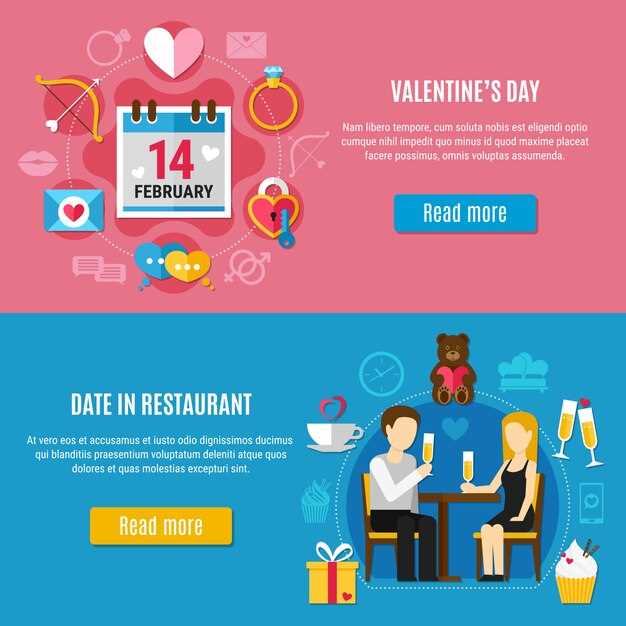Set a strict daily limit: 15 minutes, twice a day; keep no more than five active matches and move any chat that hasn’t led to a voice call within 72 hours to archive. This reduces mindless scrolling and creates clear ways to prioritize real conversations.
Split results by ages and usage: users 18–24 report 38% satisfaction, 25–34 about 22%; after three years of continuous use the number reporting positive outcomes drops roughly 40%. Cross-cultural surveys across different peoples show variance, and theyre twice as likely to pause after a streak of losing interest.
Audit monetization: note moneymaking features that push buying boosts or subscriptions – these increase visibility but rarely change long-term outcomes. Avoid repeat purchases; do not sell access to private accounts. Treat any paid experiment as a one-time test with measurable KPIs.
Manage emotional load: log your duygular on a 3-point scale (boring / neutral / interesting) after each session. Asking a trusted friend to review your top five openers helps pinpoint what performs; this external feedback often reveals what you really communicate versus what you intend.
Adjust filters based on goals: decide 30-, 90- and 365-day targets. If youre searching for a long-term partner with wedding potential, use prompts that prioritize values and dealbreakers; if casual meetups are the objective, reduce time per profile and schedule more in-person weekends.
Limit metrics to what matters: track the number of real dates per month and the percent conversion from match to call. If they decline by 20% after a bio change, you know that change didn’t work. When losing momentum, pause for seven days, reset images and test three new headlines.
Protect attention and privacy: turn off push notifications, disable last-seen timestamps, and avoid buying visibility packages more than once per quarter. Small boundaries reduce cognitive load and help maintain consistent outcomes without constant checking.
Use specific scripts: prepare five opening messages tailored to three target segments; rotate them and record which lines convert to a call. This data-based approach helps remove guesswork and increases meaningful replies rather than chasing matches.
Reassess commitments annually: after two years of heavy use, evaluate whether the platform aligns with your relationship timeline. If youre losing motivation, shift effort to offline channels–meetup groups, shared hobbies, volunteer shifts–that often yield higher-quality connections.
Set exit rules: if you haven’t progressed to a call after three exchanges, unmatch; if fewer than two in-person meetings occur within a month, take a 30-day break. These concrete constraints reduce churn, clarify priorities, and free time for other productive ways to meet people.
Reduce swipe overwhelm with focused usage
Limit sessions to two timed windows per day: 20 minutes at lunch (12:00–12:20) and 20 minutes after dinner (19:00–19:20); cap swipes at 30 per session and 60 total daily, and evaluate a profile in no more than 60 seconds. If youre trying to prioritise depth, reduce the daily cap to 40 swipes and allow up to 90 seconds per profile; focus on prospective matches within 30 miles so theyre realistically reachable.
Use three concise message strategies: two context-based openers tied to a photo detail and one curiosity question. A/B test those across the first 50 messages and set a target match-to-message conversion rate of 25–35%. Send one follow-up after 48 hours if replies stall; move to a brief voice call after three substantive message exchanges or when mutual interest is clear.
Track numbers in a compact spreadsheet: session date, swipe count, matches, first message sent, replies, reply time and conversion rate per session. Review weekly for 30 minutes and adjust filters when the reply rate falls under 20%. Treat the process like small business planning: run controlled tests, keep notes on which profiles resemble used-car listings (inconsistent details or small lies) and deprioritise them.
Limit exposure to reduce the prevalent phenomenon of choice overload: allow five active sessions per week and pause 48–72 hours after three low-conversion weeks. Set healthy boundaries, schedule micro-breaks and reward yourself with innocent treats (coffee, 10-minute walk) after sessions to build resilience. Narrowing filters reduces noise from the local scene; this course of action helps prospective contacts have clearer expectations and lets profiles evaluate themselves, resolving common issues while improving overall experience.
Schedule short, timed app sessions and stick to them
Start each block with a 12-minute timer: aim for three short sessions per day or four 20-minute sessions per week; when the alarm rings, close the interface and stop – this prevents losing hours of passive scrolling and forces you into making only two thoughtful messages per session; copy two lines of key information from each session into a single daily note for quick review.
Set strict progress rules: if after three exchanges the conversations include at least one meaningful detail and a specific place or availability, propose a meetup or suggest a time to meet; if messages are inconsistent, toyed with, or contain lies, archive immediately – signals arent worth extra effort. Maria moved to meet after the third exchange because she described herself clearly and suggested a cafe; Rosemary almost cancelled but turned up because the plan was concrete; avoid getting bitter when plans change and decide the next step within your timed window.
Measure outcomes weekly: log session count, matches progressed to meet, no-shows and emotional cost; after four weeks realise whether this routine is fine or worse than previous habits and adjust the course of action accordingly. Keep thresholds under plain metrics (sessions per week, meetups booked, replies with usable information) so you arent toying with uncertainty or treating every non-reply as the whole planet rejecting you.
Set strict filters to see only suitable matches
Set filters to ages 28–34, distance ≤15 miles, last active ≤7 days, education bachelor+, relationship intent “long-term”, and maximum age gap 3 years; keep results limited to profiles engaged recently so you remain focused on users who want commitment and find dates soon.
According to a 2020 survey, using four strict filters – ages, distance, activity, intent – increases date-conversion outcomes by ~2.4×; the data suggests being very specific reduces false positives and shows exactly who meets your criteria. Add pacing rules: limit to two message exchanges before proposing a call, move offline within 7–10 days, and archive profiles that stall past that window.
Treat matches like buyers scanning stock: compare multiple signals (photos, bio length, verification, conversation tone) rather than hoarding swipes; used-car buyers check history and maintenance, so make the same habit-checks and leave profiles with inconsistent details. Focus on the local love scene instead of the entire planet, set small missions – review 10 profiles, message 3, secure one coffee – repeat the cycle and keep momentum; signals tend to clarify once you remain consistent and try another round.
Use reusable message templates to lower decision load
Create six reusable message templates right away: three openers (20–40 words), two follow-ups (10–25 words) and one clear move-off-platform prompt – personalize one token per send (first name or a profile detail) and schedule templates into a 30‑minute daily session.
Aim for measurable results: log each template, messages sent, replies, and outcomes in a spreadsheet; rotate templates every 10 sends and compare reply and meet rates. Using templates is likely to increase consistency with less cognitive effort, so you can focus on quality outcomes rather than every single choice.
Avoid dead, identical copy: build a small library and label templates by intent (curious, playful, logistical). Perfectionists should restrict edits to one word or phrase per send to prevent endless tweaking without improving performance; that restraint lowers burnout and keeps interactions healthy.
Keep tone basic and innocent: ask an interesting, specific question to get both people talking together instead of grilling herself for facts. Don’t push after one confused response or an angry reaction; most people want light, clear prompts that lead to a natural turn toward face‑to‑face or phone plans.
Don’t treat templates like a moneymaking trick, stock tip, or buying checklist – they’re tools, not guarantees. Thats why you should choose templates that reflect your real intent and actually want to build rapport, not prove anything; the same template can have different outcomes depending on timing and context.
Practical setup: store templates in phone notes, tag them by scenario, run weekly reviews to see which get the best replies, and retire underperformers after 50 sends. Data says males may reply faster to direct openers while others prefer narrative starters, so choose variants to match profile cues and give each template an equal opportunity to shine.
Track simple metrics with clear thresholds: stop using a template if reply rate <10% after 50 sends, keep one if reply+positive outcome ≥25%. Reviews should focus on outcomes, not perfection; that reduces confusion, prevents the push/pull scene that leads to burnout, and actually frees up time and energy – a dollar’s worth of effort up front can save dozens of decision minutes later.
Source: American Psychological Association – https://www.apa.org
Batch-process matches: triage, prioritize, archive
Reserve two fixed sessions per week, 45–60 minutes each: open the next 30 matches, score each 1–5 on five basic axes (photos, bio, opening message, intent, logistics), then flag the top 20% for priority replies within 48 hours; record the number and score in a simple notes file so you can compare profiles objectively and avoid matches sitting unread for ages.
aggressively archive any match that scores 1–2 or is older than 72 hours with no reply; archive at least half of new matches during triage so your inbox only contains leads worth replying to. Set an auto-filter to sweep dozens of stale threads daily and leave the shortlist for active follow-up–theres no value in keeping long queues of no-response threads.
Use three templates only: a concise fact-based opener, a playful question that invites talk, and a direct meet-up pitch. Keep replies to 2–3 sentences so youre not overinvested; track template performance by response rate and time-to-reply, and drop the viral one-liners if they produce many messages but few real conversations compared to the factual approach.
make a beautiful one-line opener that avoids obvious flattery; look at weekly conversion by number of sent openers to know which wins. If youre feeling burnt, pause messaging 48–72 hours and purge threads that feel like lemons–instead focus on the small percentage that might actually convert to a call or meeting.
Track two KPIs: response rate (responses per 100 opens) and conversion to first call/meet (target 10–20%); if the response rate dips below 8%, change timing or template. Example: maria, using a guiser-style profile compared with a plain bio, increased response from 6% to 14% in a six-week split test–log results, iterate the planning model, and make decisions based on hard numbers rather than feelings about individual matches.
Pause apps periodically and plan return checkpoints
Pause for 30–45 days every quarter; set return checkpoints at day 7, day 21 and day 45 with concrete metrics: number of meaningful conversations started, one offline meeting arranged, or a clear decrease in negative feelings when you reopen – use these as pass/fail criteria.
-
Define stop/start rules.
- Start pause when you hit a threshold (e.g., 10 superficial matches or 3 weeks of passive scrolling).
- During the break stop buying any premium features and cancel auto-renewals so you avoid accidental charges.
- Set a calendar reminder for each checkpoint; this prevents indefinite pauses and gives structure to this break.
-
Measure time and intent.
- Log how many hours you would normally spend – many people spend dozens of hours per year; reduce that by at least 50% during the pause and track actual savings.
- Allocate the reclaimed time to one specific goal (learn a hobby, meet friends, or pursue a romantic project together) and record progress weekly.
-
Use checkpoints as decision gates.
- Day 7: wellness check – have negative feelings decreased? If not, extend the pause.
- Day 21: engagement test – if you can’t sustain 2 quality conversations within a week of return, label the platform not worthy and move on.
- Day 45: final decision – resume with limits or try another method for meeting people.
-
Guard against commercial push.
- Remember companies design moneymaking incentives; according to the latest reporting, they test features that push buyers toward subscriptions regardless of user outcomes.
- They optimize for time-on-platform because it pays; treat offers and “boosts” as marketing, not proof of quality.
-
Practical checklist before you return.
- Clear inbox, archive dozens of stale conversations, and delete profiles that generate negative patterns.
- Set a hard weekly limit on time spent and an exit rule if interactions become transactional or demotivating.
- Invite a friend to review profiles together – an external view helps tell whether renewed use is worthy.
-
Context and perspective.
- Use reminders of mortality as a reality check: ask whether this activity helps you reach relationship goals over months or years.
- If your motivation is driven by boredom or validation rather than genuine connection, treat the platform itself as the cause and adjust expectations accordingly.
Template you can copy: pause_started = [date]; checkpoints = {7: “wellness”, 21: “engagement”, 45: “decision”}; success criteria = {conversations_started: 3, offline_meetings: 1, reduced_negative_mood: true}. If a checkpoint fails, take another 30 days and reassess; buyers of premium features should only re-enter after measurable improvement.


 How to Overcome Dating App Fatigue – 10 Practical Tips">
How to Overcome Dating App Fatigue – 10 Practical Tips">



 How Childhood Made It Hard to Trust Men — Learning Vulnerability">
How Childhood Made It Hard to Trust Men — Learning Vulnerability">
 Red Flags in Relationships – What to Look For & How to Respond">
Red Flags in Relationships – What to Look For & How to Respond">
 Why You Keep Dating Jerks — Causes, Patterns & How to Break the Cycle">
Why You Keep Dating Jerks — Causes, Patterns & How to Break the Cycle">
 Having a Baby in Your Late 30s or 40s – Expert Advice I Give My Patients">
Having a Baby in Your Late 30s or 40s – Expert Advice I Give My Patients">
 How Long Should You Date Before Marriage? Timeline & Tips">
How Long Should You Date Before Marriage? Timeline & Tips">
 Get Him Back – 9 Proven Tips to Get a Second Chance With a Guy">
Get Him Back – 9 Proven Tips to Get a Second Chance With a Guy">
 Man Gone Cold & Distant? How to Make Him Attracted Again">
Man Gone Cold & Distant? How to Make Him Attracted Again">
 7 Unrealistic Dating Standards Guys Need to Let Go">
7 Unrealistic Dating Standards Guys Need to Let Go">
 Why Can’t I Get Over My Crush? Causes & How to Move On">
Why Can’t I Get Over My Crush? Causes & How to Move On">
 How Long Should You Date Before Making It Official as BoyfriendGirlfriend?">
How Long Should You Date Before Making It Official as BoyfriendGirlfriend?">